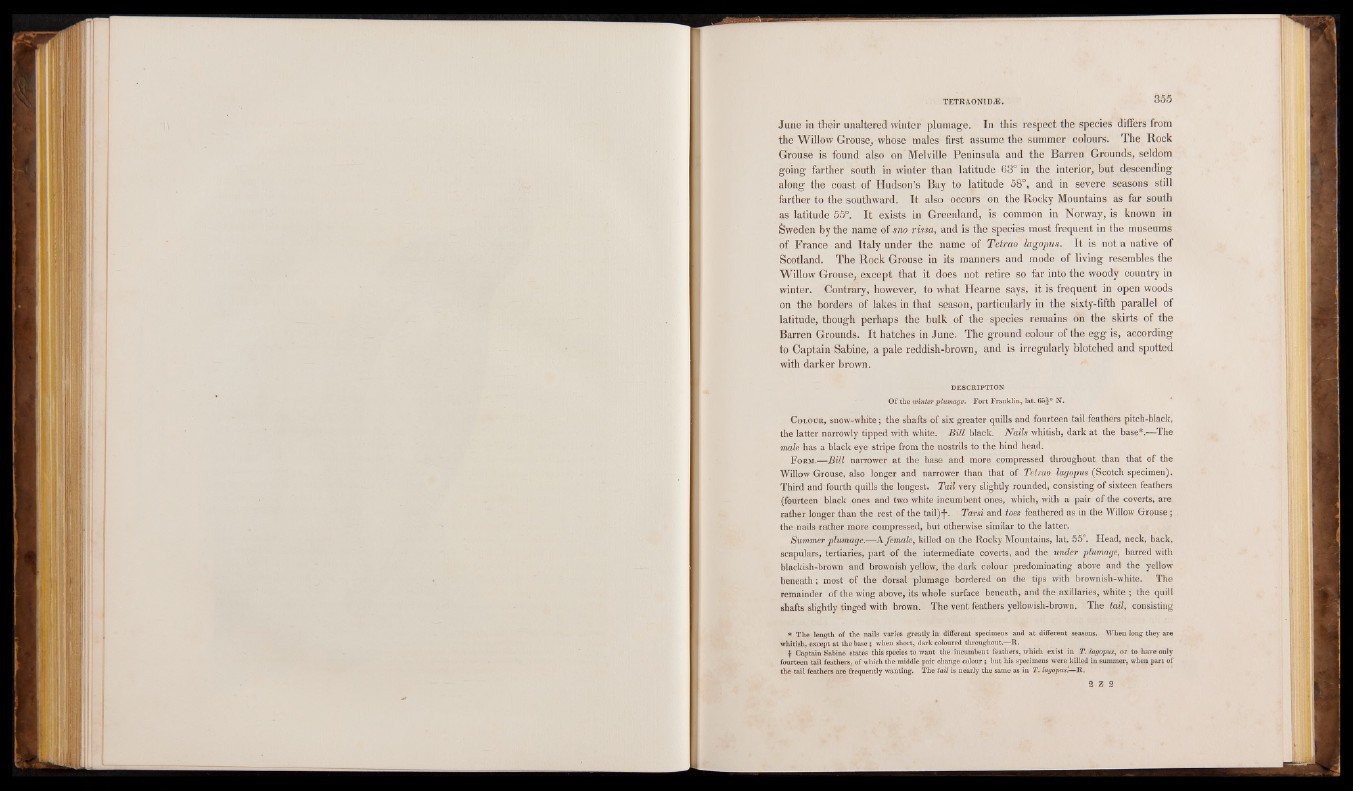
June in their unaltered winter plumage. In this respect the species differs from
the Willow Grouse, whose males first assume the summer colours. The Rock
Grouse is found also on Melville Peninsula and the Barren Grounds, seldom
going farther south in winter than latitude 63° in the interior, but descending
along the coast of Hudson’s Bay to latitude 58°, and in severe seasons still
farther to the southward. It also occurs on the Rocky Mountains as far south
as latitude 55°. It exists in Greenland, is common in Norway, is known in
Sweden by the name of sno rissa, and is the species most frequent in the museums
of France and Italy under the name of Tetrao lagopus. It is not a native of
Scotland. The Rock Grouse in its manners and mode of living resembles the
Willow Grouse, except that it does not retire so far into the woody country in
winter. Contrary, however, to what Hearne says, it is frequent in open woods
on the' borders of lakes in that season, particularly in the sixty-fifth parallel of
latitude, though perhaps the bulk of the species remains on the skirts of the
Barren Grounds. It hatches in June. The ground colour of the egg is, according
to Captain Sabine, a pale reddish-brown, and is irregularly blotched and spotted
with darker brown.
DESCRIPTION
Of the winter plumage. Fort Franklin, lat. 65J° N.
Colour, snow-white; the shafts of six greater quills and fourteen tail feathers pitch-black,
the latter narrowly tipped with white. Bill black. Nails whitish, dark at the base*.—The
male has a black eye stripe from the nostrils to the hind head.
Form.—Bill narrower at the base and more compressed throughout than that of the
Willow Grouse, also longer and narrower than that of Tetrao lagopus (Scotch specimen).
Third and fourth quills the longest. Tail very slightly rounded, consisting of sixteen feathers
(fourteen black ones and two white incumbent ones, which, with a pair of the coverts, are
rather longer than the rest of the tail)f. Tarsi and toes feathered as in the Willow Grouse;
the nails rather more compressed, but otherwise similar to the latter.
Summer plumagehr-A female, killed on the Rocky Mountains, lat. 55°. Head, neck, back,
scapulars, tertiaries, part of the intermediate coverts, and the under plumage, barred with
blackish-brown and brownish yellow, the dark colour predominating above and the yellow
beneath; most of the dorsal plumage bordered on the tips with brownish-white. The
remainder of the wing above, its whole surface beneath, and the axillaries, white ; the quill
shafts slightly tinged with brown. The vent feathers yellowish-brown. The tail, consisting
* The length of the nails varies greatly in different specimens and at different seasons. When long they are
whitish, except at the base; when short, dark coloured throughout.—R.
f Captain Sabine states this species to want the incumbent feathers, which exist in T. lagopus, or to have only
fourteen tail feathers, of which the middle pair change colour; but his specimens were killed in summer, when part of
the tail feathers are frequently wanting. The tail is nearly the same as in T. lagopus’— R.
2 Z 2